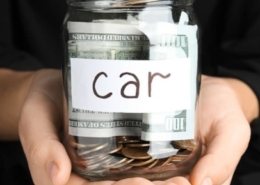What Color Car Should I Buy?
Choosing the perfect car color: Factors to consider, popular choices, and tips for making the right decision.
What Color Car Should You Buy?
When purchasing a new car, one of the many decisions you’ll have to make is the color of your vehicle. Your car’s color reflects your style and impacts various factors such as resale value, maintenance, and safety.
Let’s explore the different aspects to consider when choosing a car color and provide some insights to help you make an informed decision.
Car Buying Tip: Finding an affordable car can be challenging in today’s market. But don’t worry! Requesting free dealer quotes through an online car-buying service will let you compare local dealer prices and get a great deal.
Factors to Consider When Choosing a Car Color
When choosing a car color, it is essential to consider personal style, resale value, maintenance requirements, and safety considerations.
Personal Preference
The first and most crucial factor to consider is your personal preference. After all, you will drive the car and look at it every day.
Choose a color that resonates with your personality and makes you happy.
Whether you prefer vibrant and eye-catching hues or more subtle and understated tones, finding a color that suits your taste is essential.
Resale Value
While personal preference plays a significant role, it’s also crucial to consider the car’s resale value.
Specific colors are more popular and desirable in the used car market, making them easier to sell and potentially sell for more.
Neutral colors like white, black, and silver are generally safe choices as they appeal to a broader range of buyers.
Climate Considerations
The climate in which you live can also influence your decision.
If you reside in a region with hot and sunny weather, lighter colors like white or silver can help reflect sunlight, keeping the car cooler.
On the other hand, if you live in an area with frequent rain or snow, darker colors may be more forgiving in terms of showing dirt and stains.
Maintenance and Visibility
Car color can also impact maintenance and visibility.
Darker colors show scratches, swirl marks, and dirt more easily, requiring frequent cleaning and maintenance to keep them looking their best.
Additionally, lighter-colored cars tend to be more visible on the road, especially during dusk or night, which can enhance safety.
Popular Car Colors and Their Meanings
Now let’s explore some of the popular car colors and the meanings associated with them:
White: Clean and Modern
White is a timeless color that conveys cleanliness, purity, and modernity.
It is popular for many car buyers due to its versatility and ability to hide minor scratches and dirt.
White cars are also known to have a higher resale value, making them a practical option for those concerned about long-term investment.
Black: Elegance and Sophistication
Black is synonymous with elegance, sophistication, and luxury. It exudes a sense of power and authority.
However, black cars require regular maintenance to keep them looking their best, as they are prone to showing dust, fingerprints, and swirl marks.
If you want to keep your car pristine, a black vehicle can make a bold and stylish statement on the road.
Silver: Timelessness and Versatility
Silver is a popular choice for those seeking a timeless and versatile color. It blends well with various car designs and reflects a sense of modernity.
Silver cars are known to hide dirt and scratches relatively well, making them a practical option for busy individuals who want a sleek and low-maintenance vehicle.
Red: Boldness and Sportiness
If you want your car to stand out and make a statement, red is a vibrant choice.
Red is associated with passion, energy, and sportiness. It’s a color that turns heads and grabs attention on the road.
However, it’s worth noting that red cars may have slightly higher insurance rates due to their association with a potentially higher risk of speeding.
Blue: Serenity and Trustworthiness
Blue is a color that signifies calmness, serenity, and trustworthiness. It’s a popular choice for those who want a car that appears reliable.
Blue cars have a broad appeal and can be an excellent option if you want a color that stands out without being overly flashy.
Green: Nature-inspired and Eco-friendly
Green is a color that embodies a connection to nature and represents eco-friendliness.
It’s a popular choice for those who value sustainability and want their car to reflect their environmental consciousness.
Green cars have a refreshing appeal and can be an excellent option for individuals seeking a balance between style and eco-responsibility.
Yellow: Vibrant and Optimistic
Yellow is a color that exudes vibrancy and optimism.
It’s a popular choice for individuals who want their car to make a bold and cheerful statement.
Yellow cars have a unique appeal and can brighten the road with their energetic presence.
A yellow car is a fantastic choice if you want a color that radiates positivity and catches attention.
Orange: Energetic and Adventurous
Orange is a color that embodies energy and adventure.
It’s a popular choice for those who want their car to make a vibrant and bold statement.
Orange cars have a captivating appeal and can turn heads with their lively presence on the road.
If you’re seeking a color that reflects a sense of excitement and stands out from the crowd, an orange car is the perfect choice for you.
Impact of Car Color on Insurance Rates
Believe it or not, the color of your car does not impact your insurance rates. This is one of the most common car insurance myths.
However, it’s important to note that other factors, such as your driving record, location, and vehicle model, impact your rates.
While there is a myth that red cars may have slightly higher insurance rates due to the perceived association with speed, it is still a myth.
Ultimately, regarding insurance, factors like the car’s make, model, and safety features play a more significant role.
Maintenance Considerations for Different Car Colors
When choosing a car color, it’s crucial to consider the maintenance it requires.
Lighter colors like white, silver, and pastels hide dirt and minor scratches better than darker shades.
Dark-colored cars, such as black, navy blue, or dark gray, may require frequent washing and detailing to maintain their appearance.
When selecting a color, it’s essential to factor in the time and effort you’re willing to invest in car maintenance.
How Car Color Affects Visibility and Safety
Car color can play a role in visibility and safety on the road.
Lighter-colored vehicles are generally more visible during dusk, dawn, and nighttime driving. They reflect light better, making them easier for other drivers to see.
Dark-colored cars, on the other hand, may blend into the background, especially in low-light conditions.
Considering the visibility aspect is crucial, especially if you frequently drive during reduced visibility or in areas with poor lighting.
Tips for Choosing the Right Car Color
Here are some tips to help you choose the right car color:
- Research and Test-Drive: Research different car colors and visit dealerships to see the colors in person. Test-drive cars in various colors to get a feel for how they suit you.
- Consider the Vehicle’s Purpose: Think about the purpose of your car. A more conservative color might be appropriate if you’re using it for business or professional goals. You can choose something that matches your style and personality, if it’s a personal vehicle or if you’re shopping for a family car.
- Consult with Professionals: Seek advice from reputable car dealerships or even car customization shops. They can provide insights into the popular colors for specific car models and help you understand the potential maintenance requirements for different colors.
- Opt for Timeless Colors: While trendy colors may be appealing, consider the longevity of your car’s appearance. Opting for timeless colors like white, black, silver, or gray can ensure your vehicle maintains a classic and sophisticated look over the years.
- Be Mindful of Personal Taste: Choose a color that aligns with your taste and style. Your car should be an extension of your personality, so select a color that makes you feel confident and happy whenever you get behind the wheel.
FAQs: Answering Your Questions
Does the color of a car affect its resale value?
Yes, the color of a vehicle can influence its resale value. Neutral colors like white, black, and silver tend to have broader appeal and may fetch higher prices in the used car market.
Are certain car colors more expensive to insure?
While car color can be a minor factor, it typically has a minimal impact on insurance rates. Other factors such as the make, model, safety features, and driving record play a more significant role in determining insurance premiums.
Do darker-colored cars get hotter in the sun?
Yes, darker-colored cars absorb more heat from sunlight, making the interior hotter. Lighter colors reflect more sunlight and help keep the car’s cabin cooler.
Which car color is the easiest to maintain?
Lighter colors like white, silver, and pastels hide dirt, scratches, and swirl marks better than darker colors. They often require less frequent cleaning and maintenance.
Can the color of a car affect its visibility on the road?
Yes, the color of a car can affect its visibility, especially during low-light conditions. Lighter-colored vehicles are generally more visible to other drivers, while darker colors may blend into the background more easily.
Conclusion: Choosing the Right Car Color
Choosing the right color for your car is an exciting part of the car-buying process.
While personal preference should guide your decision, it’s also essential to consider factors such as resale value, climate, maintenance requirements, and safety considerations.
By carefully evaluating these factors and following the tips, you can select a car color that suits your style, enhances the car’s appeal, and ensures a positive ownership experience.

















